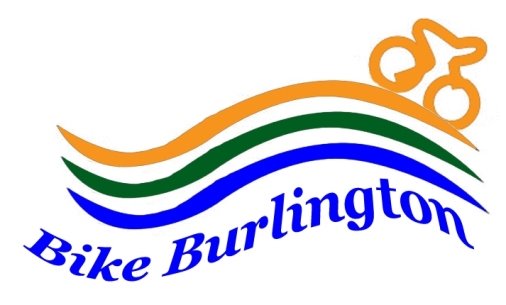Thanks to Leo DeLoyde who stickhandled councillor's questions. Special thanks to Tom Eichenbaum & his team at city hall that assisted in the creation of the cycling master plan.
During the question & answer session, several councillors asked very illuminating questions that merited explanations. Here's my attempt.
Q: Safety. "Its not safe to cycle on busy roads. Cycling on sidewalks or paths adjacent to the road is safer."
A: Numbers count. Studies from around the world have concluded that its a circle. The more people cycle,
 the safer cycling is. The safer cycling is, the more people cycle.
the safer cycling is. The safer cycling is, the more people cycle.Portland State University research has concluded that bike infrastructure i.e. bike lanes & routes encourage people to get out of their cars & steers them to safer streets.
According to http://www.midmeac.org/bikelanes.htm “Why can’t cyclists just ride on the sidewalk?” Although you may think sidewalks are safest, national studies show that bicyclists are much safer on the street.
Roads with striped bike lanes decrease bicycle accidents by 38%. Why? A big reason is that when bicyclists are in bike lanes they are always visible to cars, instead of darting on and off the sidewalk, behind trees and parked cars, and out of the view of motorists. In addition, the most common accident for bicyclists is cars turning into them, not cars hitting them from behind. When a bicyclist is on the sidewalk, they must cross many driveways that drivers turn into not expecting to see a bicyclist on the sidewalk.
This was confirmed in a 10 year Toronto collision study. Over 40% of all cyclist collisions occurred at the point where a cyclist entered the roadway from an adjacent path.
Q: Cost. "We could build 3 community centres for the same money."
1. Gil Penalosa of www.cycleandwalkforlife.org has repeatedly stated that more people use trails than ALL of the arenas, baseball fields, soccer fields, and recreation centres COMBINED. Paved trails are part of the CMP.
2. Bike lanes encourage cycling & active lifestyles. Healthier, slimmer people create less demand on our limited health resources. The Ont. Medical Ass. stated that air pollution and inactivity costs the Ont. economy approximately $2 BILLION annually in emergency room visits, hospital stays and lost productivity. Stats Canada states each Cdn takes 2,000 car trips annually under 2km in length. Short car trips are the biggest contributors to air pollution.

3. Other benefits. Cycling provides additional benefits in the form of tourism, quality of life, less congestion & less infrastructure spending e.g. fewer parking spaces needed at the GO Station. Every cyclist you see on the road & every bike at a bike rack represents ONE LESS CAR on the road.
From 1950 to 1975, cycling in Europe actually declined as increasing road capacity for cars was the focus. In 1975, the Netherlands, Denmark & Germany started to promote cycling & public transport. It took 25 years for the changes and now they are reaping the rewards of healthier people, lifestyles and quality of life. The sooner we start in Burlington, the sooner future generations will benefit.
Lets pass the CMP & start on the road to future benefits! Council votes on July 6th. Let your councillor know, you favour the CMP. Thanks!

No comments:
Post a Comment